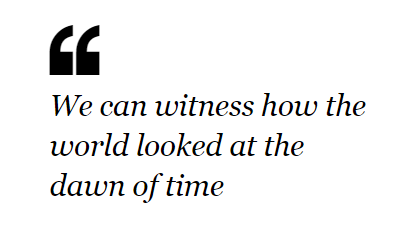Welcome to DU!
The truly grassroots left-of-center political community where regular people, not algorithms, drive the discussions and set the standards.
Join the community:
Create a free account
Support DU (and get rid of ads!):
Become a Star Member
Latest Breaking News
General Discussion
The DU Lounge
All Forums
Issue Forums
Culture Forums
Alliance Forums
Region Forums
Support Forums
Help & Search
The DU Lounge
Related: Culture Forums, Support ForumsA 3.5 billion-year-old living organism
In Western Australia, 3.5bn-year-old stromatolites built up the oxygen content of the Earth’s atmosphere to about 20%, giving the kiss of life to all that was to evolve.http://www.bbc.com/travel/story/20210117-stromatolites-the-earths-oldest-living-lifeforms

The sunroof was open and the tinted windows were wound down. It was the closest I could get to soaking in the surrounds of desert and sea under the cloud-sailing sky. I was on Indian Ocean Drive heading a couple of hours north of Perth to Lake Thetis, on Western Australia’s wildcard Coral Coast. Like an M C Escher drawing, the landscape morphs from market gardens to limestone-spotted scrub, soundtracked with clattering windmills drawing water from the Yarragadee Aquifer formed during the Jurassic era. There were white-trunked eucalypts and punk-haired grass trees sprouting in their thousands, flocks of black cockatoos in raucous flight and, sadly, dozens of kangaroos that had ended their days as roadkill.
Going on a road trip along the coast of the oldest continent on Earth was bound to be steeped in mysteries. As I passed green and yellow road signs warning to keep a look out for kangaroos, emus and echidnas, there was another rare life form I was seeking an audience with – one that traces its ancestry to the beginning of time. Stromatolites are living fossils and the oldest living lifeforms on our planet. The name derives from the Greek, stroma, meaning “mattress”, and lithos, meaning “rock”. Stromatolite literally means “layered rock”. The existence of these ancient rocks extends three-quarters of the way back to the origins of the Solar System.
With a citizen scientist’s understanding, stromatolites are stony structures built by colonies of microscopic photosynthesising organisms called cyanobacteria. As sediment layered in shallow water, bacteria grew over it, binding the sedimentary particles and building layer upon millimetre layer until the layers became mounds. Their empire-building brought with it their most important role in Earth’s history. They breathed. Using the sun to harness energy, they produced and built up the oxygen content of the Earth’s atmosphere to about 20%, giving the kiss of life to all that was to evolve.

Living stromatolites are found in only a few salty lagoons or bays on Earth. Western Australia is internationally significant for its variety of stromatolite sites, both living and fossilised. Fossils of the earliest known stromatolites, about 3.5 billion years old, are found about 1,000km north, near Marble Bar in the Pilbara region. With Earth an estimated 4.5 billion years old, it’s staggering to realise we can witness how the world looked at the dawn of time when the continents were forming. Before plants. Before dinosaurs. Before humans.
snip
InfoView thread info, including edit history
TrashPut this thread in your Trash Can (My DU » Trash Can)
BookmarkAdd this thread to your Bookmarks (My DU » Bookmarks)
2 replies, 730 views
ShareGet links to this post and/or share on social media
AlertAlert this post for a rule violation
PowersThere are no powers you can use on this post
EditCannot edit other people's posts
ReplyReply to this post
EditCannot edit other people's posts
Rec (14)
ReplyReply to this post
2 replies
 = new reply since forum marked as read
Highlight:
NoneDon't highlight anything
5 newestHighlight 5 most recent replies
= new reply since forum marked as read
Highlight:
NoneDon't highlight anything
5 newestHighlight 5 most recent replies
A 3.5 billion-year-old living organism (Original Post)
Celerity
Jan 2021
OP
Response to Celerity (Original post)
Chin music This message was self-deleted by its author.
dhill926
(16,351 posts)2. very cool...would love to go see this...
post pandemic of course....